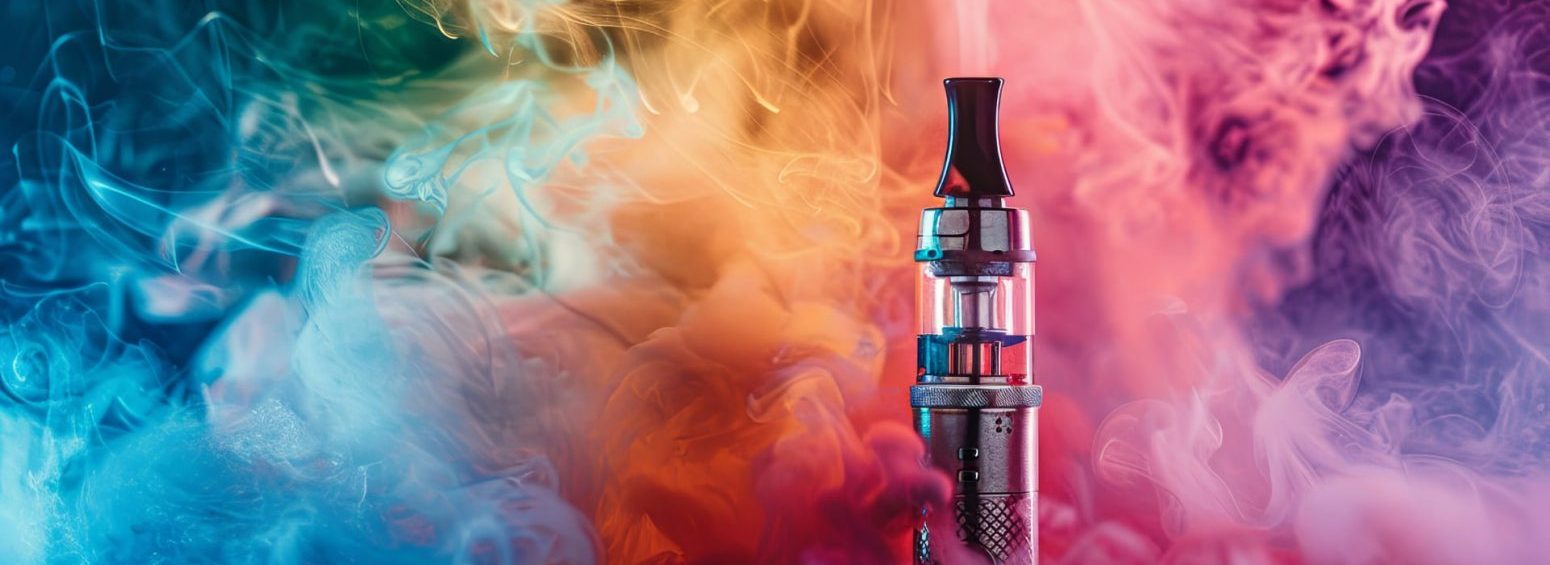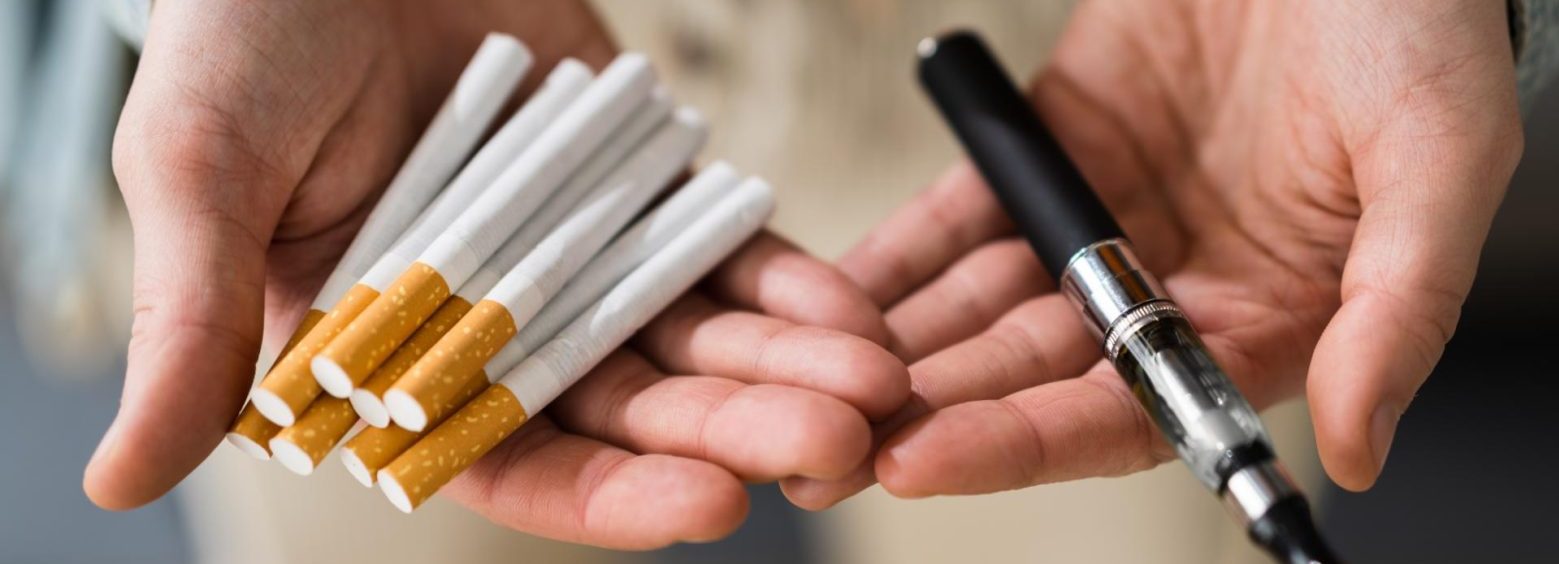- WARNING: This product contains tobacco-free nicotine
- Nicotine is an addictive chemical
- This product is not derived from tobacco
Table of Contents
Subscribe to our newsletter
Recent Posts
Share post:
Table of Contents
Vaping has become widespread as analogous to traditional smoking in recent years. Thus, with the extension of vaping, many questions related to its effects on health have emerged, including the impacts on calorie consumption.
Do sweet e-liquid flavors that accompany the vape juices count as calories in their daily intake of foods?
Let’s see!
Vape Ingredients and Calories
Diving into the world of vaping requires examining these popular devices more closely. Knowing their core ingredients helps you better evaluate their potential impact on daily caloric intake.
What’s Inside a Vape?
To determine the caloric content of vaping we need to first analyze the ingredients of e-liquids. The primary components of vape juice include:
- Propylene Glycol (PG): A clear and perfumeless liquid that is predominantly integrated with e-liquids. It is believed to hold flavor perfectly and provide what is called a throat hit, much like smoking does.
- Vegetable Glycerin (VG): A thicker liquid that creates a bigger vapor cloud when burned. VG is also non-sour, tasty, and can be incorporated into foods for consumption.
- Nicotine: The psychoactive alkaloid that is present in tobacco, but, can also be present in a range of concentrations in e-liquids.
- Flavorings: These can be natural or artificial and cause a range of variations in the flavor of vape juices.
All of these ingredients play a unique role in adding calories to vaping as a whole process.
Do Vape Ingredients Contain Calories?
Both PG and VG contain calories, specifically around 4 calories per gram. However, since vaping involves inhaling vapor rather than consuming liquid, the actual caloric intake from these ingredients is negligible.
- Propylene Glycol: Approximately 4 calories per gram.
- Vegetable Glycerin: Also about 4 calories per gram.
- Nicotine: Essentially calorie-free in the amounts typically consumed through vaping.
- Flavorings: Generally contribute minimal calories, as they are used in very small amounts.
Summing up the above information, a typical vape juice might contain around 5 calories per milliliter. For instance, a standard 30ml bottle of e-liquid would have approximately 150 calories. While this number may seem significant at first glance, it pales compared to everyday food items.
Calorie Content in Different Vape Types
Not all vapes are created equal, and the variations in composition can subtly impact their caloric profile. Understanding these differences can help you make more informed choices about your vaping habits.
Calories in Nicotine-Free vs. Nicotine Vapes
There are different types of vapes, but the main distinction between nicotine-free and nicotine-containing vapes is the presence of nicotine.
However, both types share similar base ingredients (PG and VG) that contribute to their caloric content.
- Nicotine-Free Vapes: These still contain PG and VG, meaning they will have similar caloric values—around 5 calories per milliliter—despite lacking nicotine.
- Nicotine Vapes: The addition of nicotine does not significantly increase the calorie count since nicotine itself does not provide substantial caloric value. Thus, both types of vapes can be considered low-calorie options.
Flavored Vapes – Do They Add Calories?
Flavored vapes are particularly popular among users who enjoy sweet or fruity tastes. However, the flavorings themselves generally do not add significant calories to the e-liquid. Most flavorings are concentrated and used in small quantities, meaning their caloric contribution is minimal.
- Sweeteners: Some e-liquids may contain sweeteners like sucralose or ethyl maltol, which can add a few extra calories but remain negligible compared to traditional food sources.
- Overall Impact: Even with flavored vapes, the total caloric content remains low—typically around 5 calories per milliliter.
Addressing Common Myths About Vaping and Calories
Misinformation can obscure our understanding of vaping’s health effects. By knowing the facts, we can dispel myths and approach vaping with a more knowledgeable perspective.
Does Vaping Lead to Weight Gain?
Many believe that vaping can cause weight gain because it has calories. However, this is nothing more than a claim and lacks scientific support. As the number of calories you consume isn’t high enough with vaping, they’re not likely to make much difference to your weight.
Most experts agree that you don’t absorb nearly as many calories from inhaling vapor. The absorption, however, takes place primarily through the mouth or throat lining only, and there is a negligible percent of total calorie content: between 2 and 1.
If you are concerned about gains in weight from vape juice, it’s important to know that lifestyle habits, such as diet and exercise, are more important than the small caloric content of vape juice.
Does Nicotine Have Calories?
Nicotine itself does not contain meaningful calories when consumed through vaping. While it is derived from tobacco plants—which do contain some caloric value—the amounts found in e-liquids are so small that they can be considered negligible.
Estimates suggest that nicotine salt vapes contribute less than one calorie per typical dose used in vaping. Therefore, it does not significantly impact overall calorie intake or weight management strategies.
Vaping, Metabolism, and Caloric Impact on Diet

While vaping itself has minimal impact on calorie intake, it’s worth discussing how it relates to metabolism and overall dietary habits.
The Role of Nicotine in Metabolism
Nicotine acts as a stimulant that can temporarily increase metabolic rate and suppress appetite. Some studies suggest that smokers tend to weigh less than non-smokers due to these effects. However, this relationship is complex.
Nicotine may reduce feelings of hunger for some individuals, leading them to consume fewer calories throughout the day.
- The stimulant properties of nicotine can lead to a slight increase in energy expenditure; however, this effect varies widely among individuals.
- Individuals transitioning from smoking to vaping may experience changes in appetite or cravings for snacks due to altered habits after quitting cigarettes.
Context for Diet-Conscious Users
- Given that vaping contributes only a few calories compared to typical food items (e.g., a medium apple contains about 95 calories), it should not be a concern for most individuals regarding their daily caloric limits.
- It’s essential for users to focus on maintaining a balanced diet rich in whole foods while being mindful of their overall lifestyle choices rather than fixating on negligible calorie counts from vaping.
So, vaping contributes almost no calories, making its impact on weight management negligible. Weigth e-liquids with an average of about 5 calories per milliliter, which is mainly PG and VG, even heavy ‘vapers’ are highly unlikely to see a real change in their weight based on vaping alone.
Some of the common myths associated with vaping’s ability to cause weight gain can go a long way to causing unneeded worries to the users. It should be noted that nicotine has practically no caloric value, and the consumption of flavored vapes does not add more calories to a person’s diet.
Hence, it can help some patients quit smoking, but it cannot be used for weight control or dieting.
Subscribe to Our Newsletter
Subscribe now to keep reading and get access to the full archive.
"*" indicates required fields

























